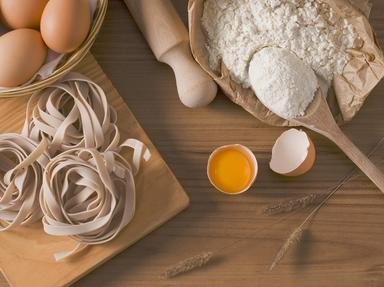Quiz Answer Key and Fun Facts
1. Meringue is popular as a baked topping for baked goods and as a cookie in its own right. Of what, primarily, is meringue made?
2. What is often added to egg whites before beating (whipping) to keep them from becoming gritty, grainy and dry?
3. African-American inventor Willis Johnson of Cincinnati, Ohio, patented a device in 1884 which made it far easier to beat ingredients. What was it?
4. Whipped cream (or Chantilly cream) is aerated cream, produced by beating (or whipping) heavy cream. This is best accomplished at what temperature?
5. Oil, vinegar and mustard drizzled into a blender filled with spinning egg yolks produces what sauce?
6. Profiteroles, croquembouches, éclairs, St. Honoré cake, gougères and chouquettes are all made with one particular sort of pastry dough. What is it?
7. Cooks quite successfully beat egg whites in bowls of glass or stainless steel, but many chefs insist on using bowls made of what for this task?
8. If someone serves you a gougère, what are you about to eat?
9. Your Japanese friend serves you tamagoyaki. What are you eating?
10. What makes a mousse a mousse?
Source: Author
FatherSteve
This quiz was reviewed by FunTrivia editor
WesleyCrusher before going online.
Any errors found in FunTrivia content are routinely corrected through our feedback system.
